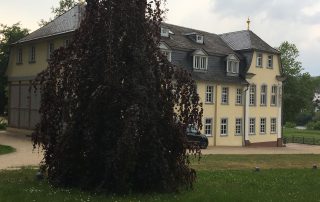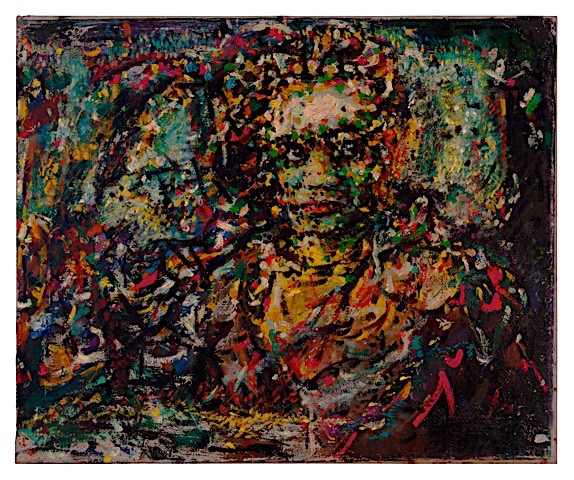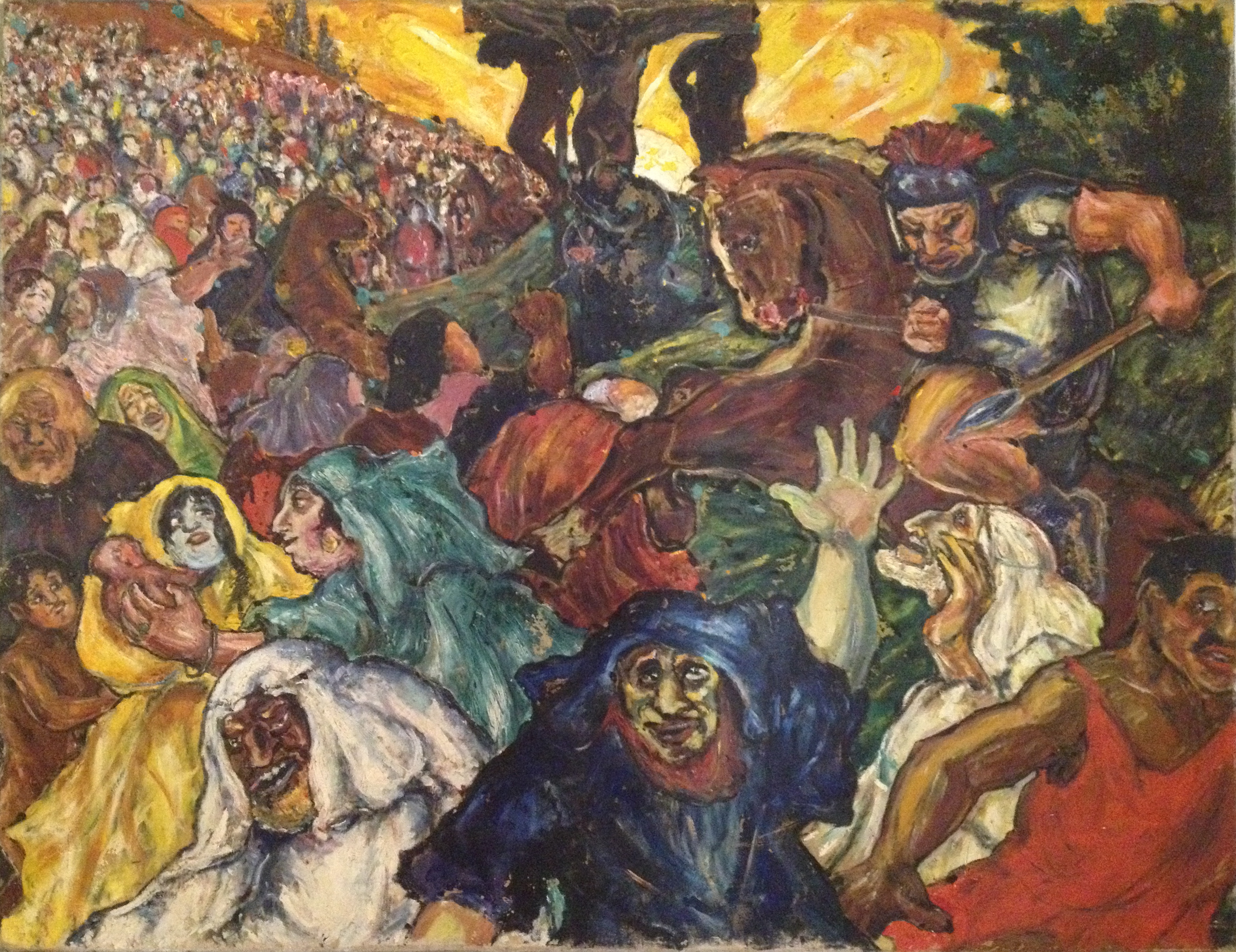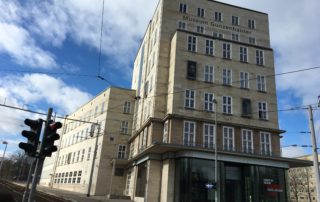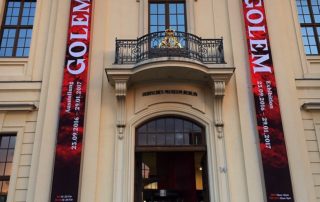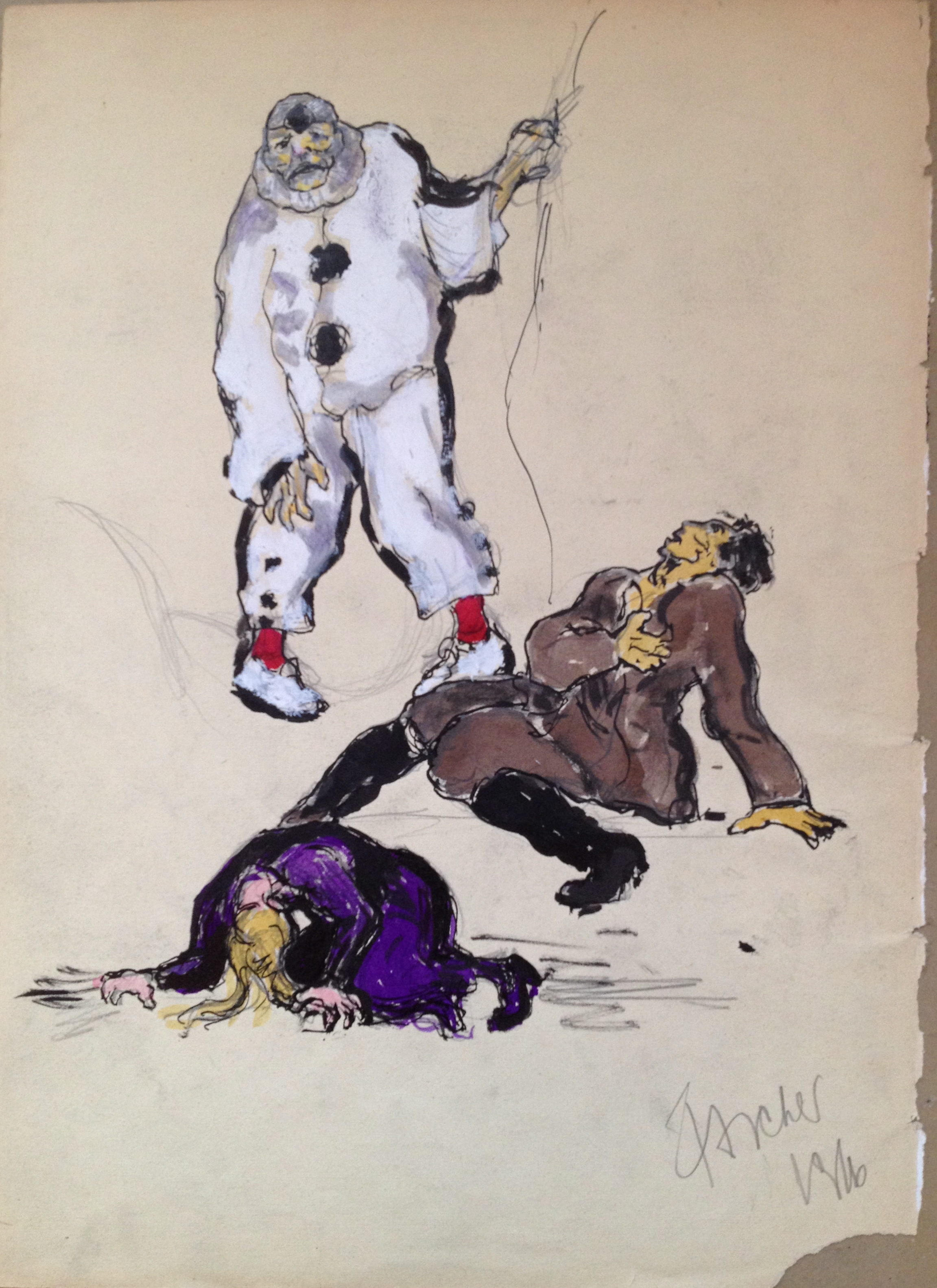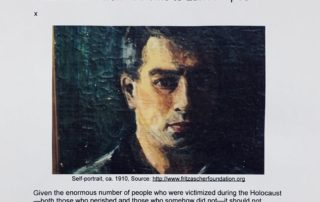Rachel Stern2018-12-03T16:06:56-05:00May 23rd, 2018|Exhibitions, Past Exhibitions|
The worldwide first Fritz Ascher Retrospective is on view at Museum Schlösschen im Hofgarten in Wertheim/Main until September 9, 2018. Here, a representative group of powerful paintings and drawings spans Ascher's whole oeuvre from first academic studies to monumental Expressionist figure compositions to late landscapes. Fritz Ascher's poems, written while hiding from Nazi persecution, can be discovered as "unpainted paintings" in relation to his artwork. In Wertheim, Ascher’s work can be seen in the context of his supporter Max Liebermann and his teachers Lovis Corinth, Ludwig Dettmann and Curt Agthe, thanks to the Schlösschen’s exquisite collection of Berlin Secession art. (website link) SWR Aktuell reported. (website link) Photos by Elmar Kellner and David Stern. A comprehensive German/English catalogue with [...]
Rachel Stern2018-12-04T11:57:56-05:00December 27th, 2017|Select Press Coverage|
Fritz-Ascher-Retrospektive „Leben ist Glühn“ Die Wiederentdeckung des Expressionisten Fritz Ascher: eine Doppelausstellung in der Villa Oppenheim und im Potsdam Museum. by Elke Linda Buchholz Einen so vollständig vergessenen Künstler zurückzuholen in die Aufmerksamkeit, braucht Kraft, Geduld und kreative Energie. Vor 30 Jahren stieß die deutsch-amerikanische Kuratorin Rachel Stern bei einem Sammler auf Arbeiten von Fritz Ascher. Sie hatte noch nie von ihm gehört. Jetzt ist sie als quasi weltweit einzige Expertin für den 1893 geborenen Maler wieder zurück in der Stadt, wo auch er einst gelebt und gearbeitet hat. Hier bei Max Liebermann holte der junge Wilde sich als 16-Jähriger nach abgebrochener Schule die höheren Weihen einer Empfehlung an die Königsberger Kunstakademie und startete zwischen Secessionisten und Expressionisten seine Karriere. [...]
Rachel Stern2018-12-04T12:21:16-05:00October 25th, 2017|Select Press Coverage|
Bilder eines Vereinsamten Das Museum Gunzenhauser erinnert an den kaum bekannten jüdischen Künstler Fritz Ascher: Dessen expressionistisch-symbolistische Bilder sind eine echte Wiederentdeckung wert, denn zwei Weltkriege konnten seine künstlerische Kraft nur schwächen - aber nicht brechen Matthias Zwarg CHEMNITZ - Es gibt ein Porträt von Fritz Ascher aus dem Jahr 1912, gemalt von seinem Freund Eduard Bischoff. Es zeigt einen optimistischen jungen Mann: Anzug, rote Krawatte, frech den Kopf auf den Arm gestützt, lächelt er froh und selbstbewusst dem Betrachter entgegen. Und es gibt ein Selbstporträt von Fritz Ascher aus dem Jahr 1953: Weiss und grau über schwarzer Tusche, Aquarell-Farbtupfer wie Wunden in dem Gesicht, in das so etwas wie die Suche nach Fassung nach dem Entsetzen eingeschrieben ist. Dazwischen [...]
Rachel Stern2018-12-21T06:00:22-05:00September 17th, 2017|Selected Publications|
Wiebke Hölzer. Fritz Ascher. Biographisch-Bibliographisches Kirchenlexikon (BBKL), vol. 38, Nordhausen: Verlag Traugott Bautz GmbH. pp. 66-71 Download PDF Geboren am 17.10.1893 in Berlin, gestorben am 26.03.1970 in Berlin; expressionistischer Maler und Grafiker, Dichter. Er wuchs als Sohn der jüdisch assimilierten Eltern Hugo Ascher (27.7.1859-18.08.1922) und Minna Luise Ascher, geb. Schneider (17.01.1867-17.10.1938) zusammen mit seinen zwei jüngeren Schwestern Charlotte (08.10.1894-06.12.1978) und Margarete (11.06.1897-15.01.1973) auf. 1899 trat Hugo Ascher mit seinen Kindern aus dem Judentum aus und ließ Fritz 1901 evangelisch taufen. Sein Vater war durch die Entwicklung von künstlichem Zahnschmelz zu Wohlstand gekommen und konnte somit Wohnungen in der Friedrichstraße und der Jägerstraße und später den Bau einer Villa in der Niklasstraße in Zehlendorf finanzieren. 1909 besuchte Ascher — durch das [...]
Rachel Stern2018-12-04T12:34:52-05:00July 10th, 2017|Newsletter|
Dear Friends, Maybe today’s storm is finally bringing warm weather? Fritz Ascher wrote a poem about the strong winds that spring brings: SPRING WIND As power romps around in space; blustering, boiling, blustering. As it tugs at the clouds, - it rustles forest and fields. As willingly everything submits to this wild child. The field weighs Its life force - ; Winds, - Spring’s windlass! (Poems Vol. 1, undated, p. 42) Siegmund Rotstein, Rachel Stern and Dr. Ingrid Moessinger at the opening of the Fritz Ascher exhibition at the Kunstsammlungen Chemnitz - MUSEUM GUNZENHAUSER on March 4, 2017. At the Kunstsammlungen Chemnitz - MUSEUM GUNZENHAUSER, the Fritz Ascher Retrospective is still on view until June 18. It is the first [...]
Rachel Stern2018-12-04T12:35:37-05:00May 15th, 2017|Newsletter|
Dear Friends, I am very excited to invite you to the opening of the Fritz Ascher exhibition at the Kunstsammlungen Chemnitz MUSEUM GUNZENHAUSER on March 4, 2017 at 7:30pm. For the first time ever, Fritz Ascher’s “Golem” from the collection of the Jewish Museum Berlin will here be reunited with other works he created between 1913 and 1933. The Kunstsammlungen Chemnitz is home to an important collection of German Expressionism, dominated by artwork of the locally founded Expressionist group Brücke and especially Karl Schmidt-Rottluff, who grew up in Chemnitz, along with Ernst Ludwig Kirchner and Erich Heckel. The Museum Gunzenhauser is home to the vast Expressionist art collection of Alfred Gunzenhauser, with the worldwide largest collection of works by Otto [...]
Rachel Stern2018-12-03T16:21:23-05:00January 12th, 2017|Exhibitions, Past Exhibitions|
The worldwide first Fritz Ascher Retrospective is on view at the Kunstsammlungen Chemnitz - MUSEUM GUNZENHAUSER from March 5 to June 18, 2017. (website link) The main focus of the presentation at the Kunstsammlungen Chemnitz - MUSEUM GUNZENHAUSER is on the artist's important early masterworks like "Golgatha" (1915), "Bajazzo and Artists" (ca. 1916) and "The Tortured" (ca. 1916). For the first time ever, Fritz Ascher’s “Golem” from the collection of the Jewish Museum Berlin will here be reunited with other works the artist created between 1913 and 1933. The Kunstsammlungen Chemnitz is home to an important collection of German Expressionism, dominated by artwork of the locally founded Expressionist group Brücke and especially Karl Schmidt-Rottluff, who grew up in Chemnitz, along [...]
Rachel Stern2018-12-04T12:38:08-05:00December 7th, 2016|Newsletter|
Dear Friends, As the holiday season is upon us, we at the Fritz Ascher Society had an exciting discovery: the gouache of a “Male Head” to the left appeared at auction in November. Even though it is not signed or dated, we recognize the gouache as a study for Fritz Ascher’s “Golem” from 1916. The features of the “Male Head” appear both in the Golem itself, as well as in the person on the left. The original graphite drawing from 1916 was later painted over with red, green, blue and black ink by the artist himself. He did this most probably in the late 1940s, when the artist repeatedly reworked previously done works on canvas and paper. Fritz Ascher, “Male [...]
Rachel Stern2018-12-04T12:43:56-05:00July 28th, 2016|Newsletter|
Dear Friends, Today we are all about literature. 400 years ago the poet William Shakespeare died (1564-1616). Ever since, the dramatic scenes in his plays have inspired many artists’ brush and pen, like William Turner, Edvard Munch, Max Slevogt and Lovis Corinth. Fritz Ascher drew scenes from Shakespeare’s "King John“, "King Richard II." and "Henry IV." He is almost certainly inspired by numerous performances, especially in Berlin. Most famous was the Austrian theater producer Max Reinhardt, who staged Shakespeare's plays at the "Deutsches Theater" and the "Großes Schauspielhaus". The drawing below shows the stage in the right background; in the foreground a man and a woman sit in a box, the rest of the audience sits below. Stage plays have [...]
Rachel Stern2018-12-03T17:37:55-05:00February 4th, 2016|Exhibitions, Past Exhibitions|
Fritz Ascher's monumental painting "Golem" from 1916 is part of the exhibition "Golem" at the Jewish Museum Berlin (September 23, 2016 - January 29, 2017).websiteThe myth of the human being that can create new life is the central theme of the large thematic exhibition "Golem" at the Jewish Museum Berlin. Until today the most prominent Jewish legendary figure inspires generations of artists and writers. The exhibition presents the Golem from its Jewish mystical source to popular narratives for film or in artistic and digital media. Formed in clay or dust, a being is brought to life by mystical rituals including Hebrew letter combinations. Created by a human being, the Golem becomes a helper, a companion or the savior of a [...]
Rachel Stern2018-12-04T12:45:14-05:00February 4th, 2016|Newsletter|
Dear Friends, As I am writing this newsletter, the snow is (still) melting here in New York after one of the largest snow storms in recent history. At the same time, Carnival is in the air - at least for our German friends. What better moment to introduce Fritz Ascher's clowns - a theme that occupied the artist throughout his career. It was certainly no coincidence that Ruggero Leoncavallo's opera "Pagliacci" (Clowns) was hugely popular in Weimar Republic Berlin - especially the performances with the best known Tenor of his time, Enrico Caruso, as Canio. Fritz Ascher, Bajazzo, 1916 In the opera, Canio, the head of a troupe of comedians, finds out that his wife Nedda has an affair with [...]
Rachel Stern2021-02-25T04:48:57-05:00January 18th, 2015|Select Press Coverage|
Fritz Ascher: from Golems to Landscapes by Ori Z. Soltes Given the enormous number of people who were victimized during the Holocaust—both those who perished and those who somehow did not—it should not surprise us that, as time goes by, narratives still continue to emerge reflecting the varied experiences of these victims and their tormentors or saviors. Among these there are many artists—artists, like Felix Nussbaum (1904-1944), who were producing high-level work, and others less skilled—who did not survive but left behind bodies of work that provoke the question: what if? Had these artists not been destroyed by the Nazis, what might they have accomplished and what songs of praise might art historians now be singing about them? There [...]


